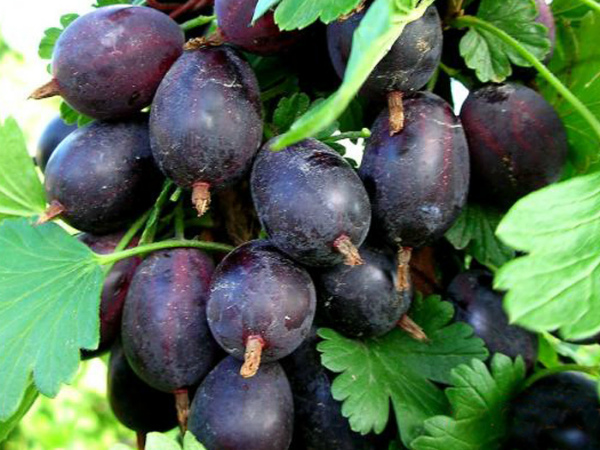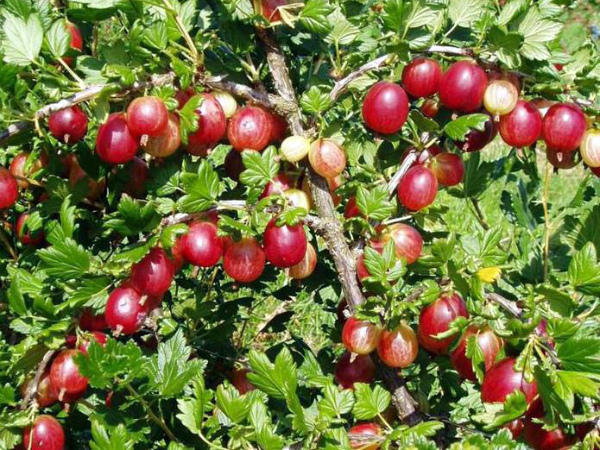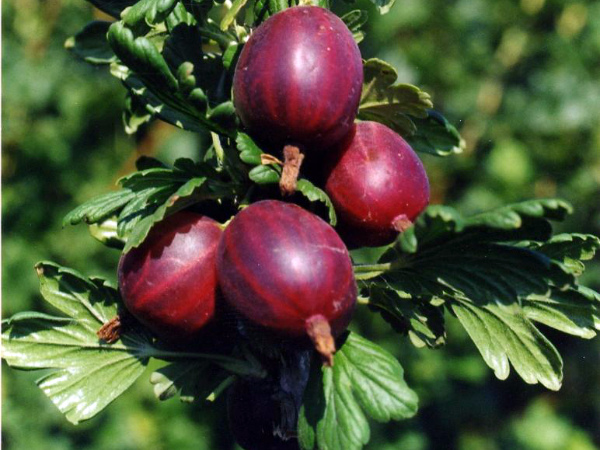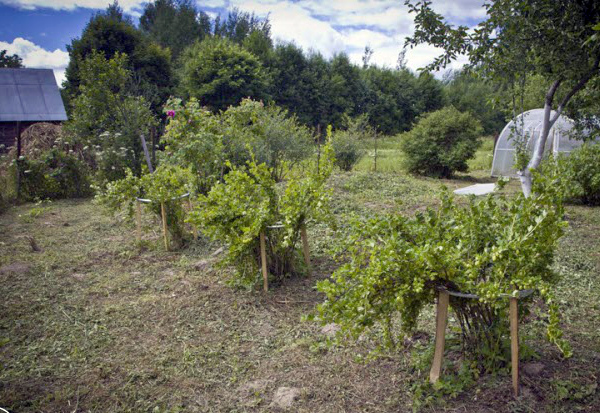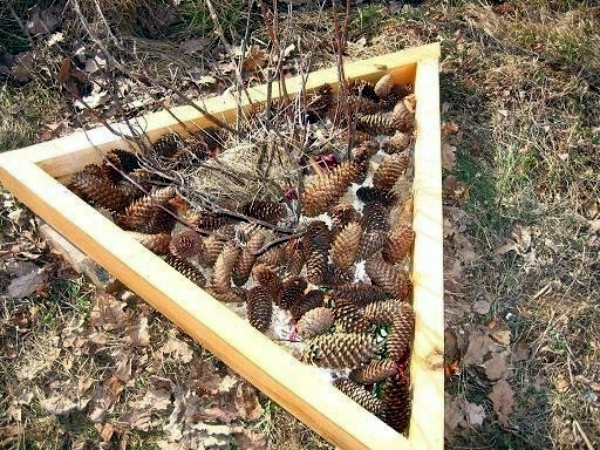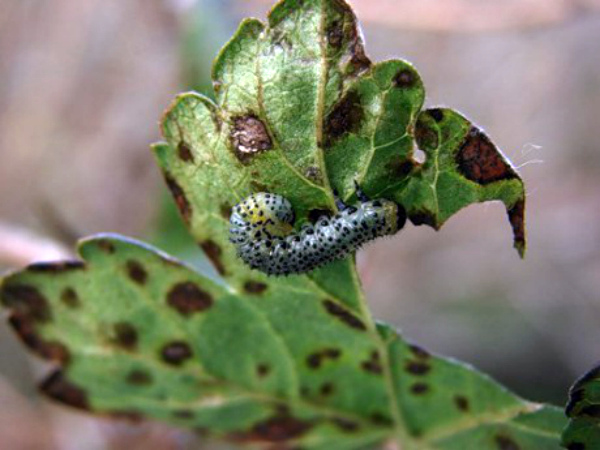Description and characteristics of the gooseberry variety Prune
Content
Features of the variety
"Prune" gooseberry was created by crossing two varieties: "Plum" and "Plum 259-23". It is distinguished by winter hardiness, grows well in the Central, Middle Volga and Ural regions. Another very important feature is that it is resistant to powdery mildew, but it is often exposed to anthracnose. Genetically inherent resistance does not give a 100% guarantee, but it significantly increases the chances of resisting pathogens. Subject to sanitary standards, which are the prevention of fungal diseases, most often it is not required to specially treat the bushes from this unpleasant disease. Such a degree of resistance to diseases in the descriptions is noted as medium.
All descriptions point out the amazing taste and aroma of prunes inherent in this variety. Beautiful large berries, oval, and sometimes pear-shaped, grow up to 2 cm wide, they have a rich red color, and darken to black by full maturity.
The bush grows up to 140 cm, it is not very sprawling, but it is worth leaving a distance of at least 1 meter between the bushes in a row. Young shoots, thick and green, grow vertically upward, and the old ones are light brown in color, slightly bent to the sides. Single thorns are dark in color, they are thick, directed at right angles from the branch. But the most important thing is that there are very few thorns, they are found only on the lower branches. So the old dream of gardeners about a bush without thorns has come true, for which it is much easier to care and harvest from such a bush is much more pleasant.
Low-gloss green leaves of medium size have a five-lobed shape characteristic of the gooseberry, where the three central lobes have clearly cut three apices, and the outer lobes (basal) are poorly developed. The leaf petiole is located at an angle of 30 degrees to the branch, it is of medium length with a slight edge at the base.
Medium-sized flowers with large light sepals. The inflorescence has one, two or three flowers. "Prune" gooseberry refers to self-pollinating varieties, but if other varieties grow on the site, then the yield will be much larger.
Beneficial features
The yield of one bush varies from 1.5 to 4 kg of berries. This variety does not give a stable harvest every year, the number of fruits varies. Unusually dark berries are not small, usually medium and large. They are not pubescent, with a light waxy bloom, they are held on a short green stalk. Sweet and sour taste of berries has aroma and taste of prunes, leaves a sweet aftertaste.
Berries are very beneficial due to their chemical composition. They contain up to 44.1 mg of ascorbic acid for every 100 g, more than 10.5% of sugars. The dense skin of the berries allows them to be transported over considerable distances, and they perfectly retain their qualities for up to 4–5 days.
Of course, it is best to eat fresh berries. They stabilize blood pressure, strengthen the body, increase its resistance to infectious diseases, and improve the functioning of the gastrointestinal tract. But most often delicious desserts are prepared from berries - preserves, compotes, jellies, jams. A wonderful wine is obtained from them, it retains the original taste and aroma. Juices, fruit drinks and tinctures retain a maximum of useful substances, they perfectly quench thirst and tone the body in the summer heat.
Planting and leaving
Plant "Prune", like any gooseberry, in the fall or spring. In the fall, young bushes are usually planted on the site. They do this in early autumn, so that before the cold weather they take root in a new place. And in the spring, cuttings are rooted, they are buried at a slope for several buds into the ground, watered, and by autumn a small bush with several shoots grows.
An open place is chosen for the gooseberry; in the shade of large trees, it will not give a bountiful harvest. You can plant it at a distance of 2 meters from young trees, but not closer. It is usually recommended to place the bushes in a row along the fence at a distance of 1.5 m from it.
In no case should you plant gooseberries where currants or raspberries grew before. Their roots are located at the same level, which means that they have already exhausted this level of soil. In addition, they have common enemies and diseases, so that the larvae and spores preserved in the ground immediately attack a new bush.
The soil should be light, well-drained, it is advisable not to choose lowlands that are prone to waterlogging, or places where groundwater comes close to the surface.
At the chosen place, a hole is dug 50 cm deep and up to 40 cm wide. If the soil is too heavy, clayey, the excavated soil is mixed with sand and peat. Be sure to add compost or rotted manure and wood ash to it. Part of this soil is poured into a hole, a bush is placed on it, and the roots are carefully sprinkled. When planting, you need to deepen the root collar 5-7 centimeters below the surface of the earth. Abundant watering will compact the soil around the roots. It is often advised to soak the roots in a special antibacterial preparation ("Barrier", "Ideal") for a day before planting.
The planted plants are cut off, leaving no more than 5 buds on healthy shoots, and the damaged ones are removed altogether. The bushes are regularly watered, spud before the onset of winter, mulched with peat or sawdust.
In the future, you need to monitor the moistening of the earthy coma, water it regularly if it does not rain. It is very important to remove weeds on time and loosen the soil under the bush after each watering, so that the roots always have access to air. In young bushes, a crown is formed by spring pruning, and then old or damaged branches are cut out annually.
After 2 years, it is usually advised to apply complex mineral fertilizers that contain the required amount of nitrogen, potassium and phosphorus.
Seasonal feeding in the spring during flowering and the formation of ovaries is done by adding very diluted slurry or bird droppings to the water for irrigation (tenfold and twentyfold dilution with water).
Disease and pest control
This variety is resistant to powdery mildew, but is susceptible to goblet rust and anthracosis diseases. These are fungal diseases, the spores of which are easily carried by the wind or on the paws of insects. The plant is most vulnerable to them in early spring. After the fruit has formed, the infection usually does not affect the bushes as badly.
To delay this moment of possible infection as far as possible, you need to disinfect the place under the bush and around it. It is imperative to remove plant residues, do not leave them nearby, dig up the earth, or even change its top layer every fall. Some gardeners spray the bushes in the spring before budding with Bordeaux liquid, while others carry out disinfection with boiling water: in early spring, before the sap flow has begun, the bush is watered with very hot (at least +90 degrees) water.
Yellow gooseberry sawfly, moth butterfly, and other pests most often hibernate in the soil, so boiling water can also help against them. Also, experts advise using oilcloth as mulch, and remove it not earlier than mid-June, when the dates for the butterflies' departure have passed.
If, nevertheless, aphids or a yellow sawfly have settled on the shoots, all leaves and twigs must be cut off, destroyed, and the bush must be treated with an ash solution and laundry soap. In addition, there are chemicals that can defeat all these misfortunes, but before use, you need to carefully study the timing and instructions for use.
Video "Thornless gooseberry"
It turns out that there is a gooseberry that not only lacks thorny thorns, but is immune to powdery mildew. Details in this video.

